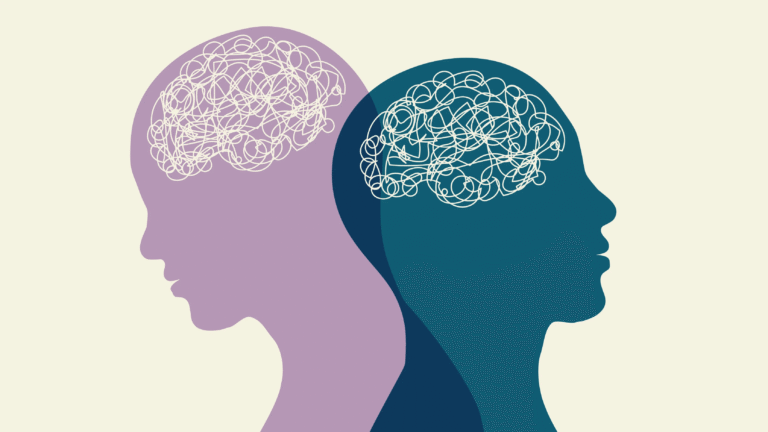Post-traumatic stress disorder, or PTSD, is a complex issue in itself, affecting roughly 5% of adults in America alone. While the disorder is caused by an initial traumatic event, it can have long-lasting and far-reaching consequences on the individual. There is also evidence that trauma changes how the brain functions, affecting memory, focus, and alertness.
Trauma and the Brain
Before we delve into the specifics of PTSD, it is crucial to understand how trauma affects the body and mind. It has been shown that following a (sufficiently) traumatic event, areas of the brain linked to the fear response become hyperactive while the areas that usually calm you down are underactive.
In essence, this is caused by and in turn causes chronic stress response activation, where your body is continuously releasing stress hormones like cortisol to optimize the mind and body’s response to a stressful situation…Even when the initial trauma is over and you are safe.
What is Complex Post-Traumatic Stress Disorder (CPTSD)
Post-traumatic stress disorder is defined in the Diagnostic and Statistical Manual of Mental Disorders (DSM-5) as a mental health condition triggered by experiencing or witnessing a traumatic event. Symptoms range from intrusive memories, avoidance of trauma-related stimuli, negative changes in thoughts and mood, to heightened arousal and reactivity. These symptoms must last for more than one month.
Complex PTSD, on the other hand, is defined by prolonged or repeated exposure to trauma over months or years, with similar symptoms to PTSD as well as additional emotional regulation issues. worsened self-perception and strong interpersonal difficulties.
These differences highlight why it is so important for psychologists, counselors, and other mental health workers to complete training based on current research through courses like a clinical mental health counseling program online.
Diagnosis of CPTSD
There are two main diagnostic manuals for mental health disorders, the DSM-5, as previously mentioned, and the ICD-11 (International Classification of Diseases). The latter was developed by the World Health Organization and is used in many countries outside the US. There is plenty of overlap between the manuals, but only the ICD-11 acknowledges CPTSD as Distinct from PTSD.
Some of the key criteria that differ between a DSM-5 PTSD classification and the ICD-11 CPTSD are the ICD’s course features like “exposure to repeated traumas,” particularly prolonged or repetitive events from which escape is difficult; ie., slavery, concentration camps, prolonged domestic violence, or repeated childhood sexual of physical abuse.
The second major difference is the ICD’s stipulation that all three of the core elements of PTSD are present, particularly “persistent perception of heightened current threat.” This is the hypervigilant tendency post-trauma to protect oneself from perceived threats, even when the environment is perfectly safe.
Symptoms of CPTSD
As we mentioned, many of the symptoms will be the same as PTSD, like avoiding situations that remind you of the trauma, hyperarousal, difficulty sleeping or concentrating, recurrent distressing memories, and more.
Alongside these symptoms, those struggling with CPTSD may experience strong emotions and have difficulty controlling them; they may be distrustful, struggle to maintain relationships, or feel helpless and guilty.
The chronic activation of the ‘fight or flight’ stress response also takes a strong toll on the body, leading to physical health issues such as chronic pain, gastrointestinal problems, and a weakened immune system. This prolonged stress can exacerbate mental health challenges, making it crucial for anyone with PTSD to seek comprehensive treatment and support.
Treatment of CPTSD
The current treatments do not really differ from traditional PTSD treatments, which can be highly effective. Trauma-focused Cognitive Behavioral Therapy (TF-CBT) is a common treatment that combines CBT techniques with a trauma-sensitive approach to address distorted thinking and reduce trauma-related symptoms.
The therapy focuses on psychoeducation, which teaches about trauma’s effects, relaxation skills to manage stress, cognitive restructuring to change negative thoughts, and gradual exposure to safely confront trauma memories. By improving emotional regulation, building coping skills, and fostering a sense of safety and control, TF-CBT empowers individuals to overcome the impact of trauma.
Rapid Eye Movement Desensitization and Reprocessing (EMDR) therapy is another evidence-based treatment for PTSD. Developed by Dr. Francine Shapiro, EMDR involves guided eye movements while recalling traumatic memories. This bilateral stimulation helps reprocess and integrate distressing memories, reducing their emotional impact. EMDR aims to alleviate PTSD symptoms by enabling the brain to resume its natural healing process.
Utility in Differentiation
I think we can all agree that when psychiatrists, psychologists, and researchers create new diagnostic criteria, the aim should be to help more people, more effectively. PTSD is incredibly complex and not fully understood, but, in theory, differentiating CPTSD means patients can get accurate treatment from healthcare practitioners who better understand the severity and complexity of their problem.
The evidence supporting a differentiation is also strong, with multiple studies finding merit in CPTSD. However, there is debate on whether people with CPTSD actually benefit from a different approach to treatment, or whether the normal PTSD treatments would work just as effectively.
Like many new variations of diagnoses, it will take time for practitioners to retrain and reframe their understanding of PTSD, but, in the long run, the process encourages better understanding of the disorder as a whole














